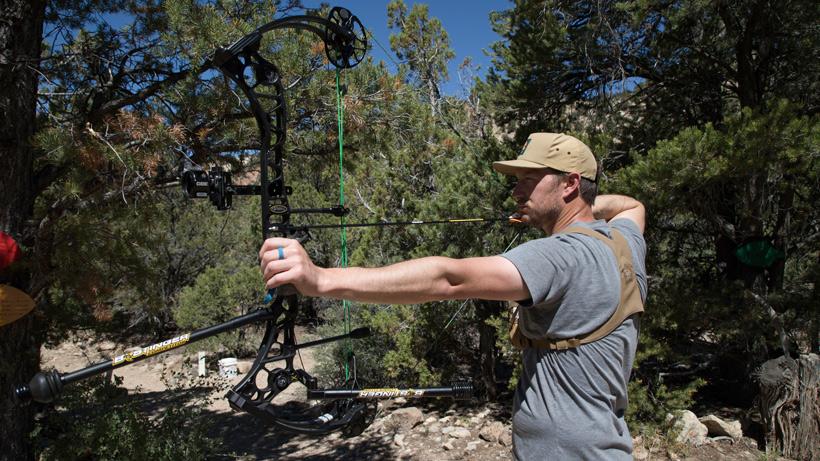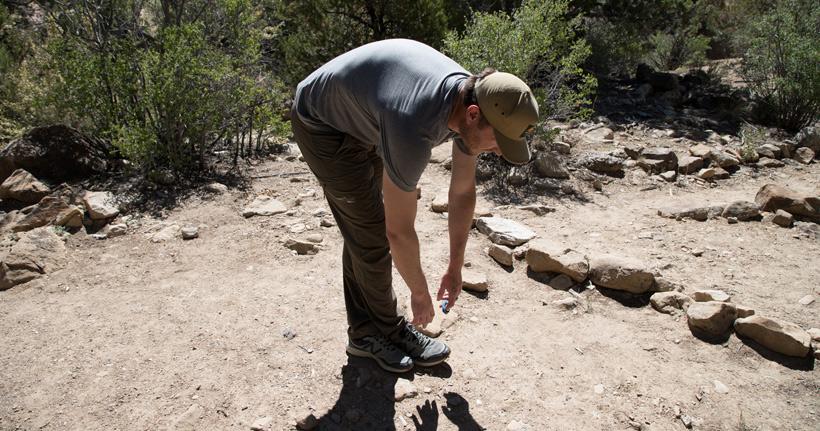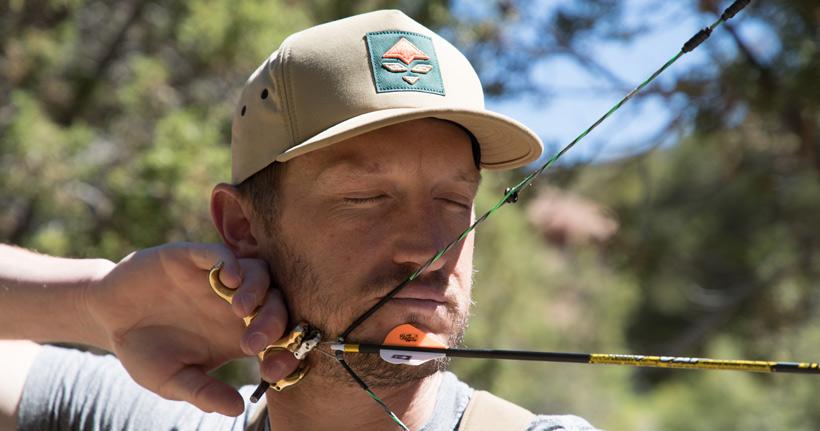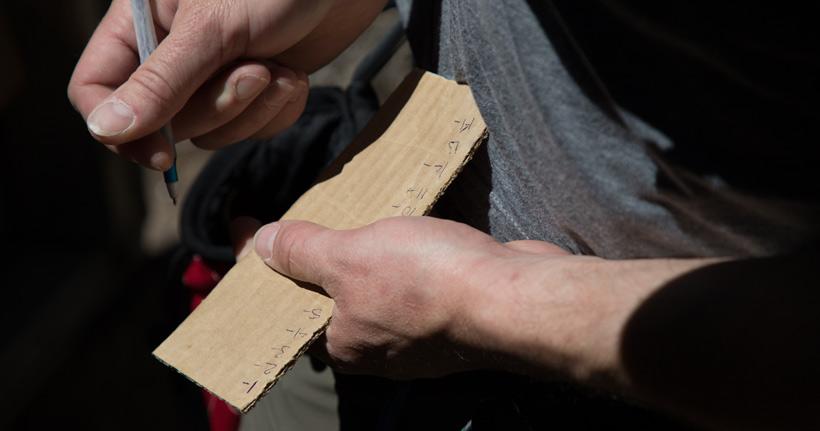










My mornings start out pretty much the same way every day with a 5 a.m. alarm, a run through the woods on my local trail system, and, then, after a quick shower, I grab my bow and head up the canyon to the archery range to practice. That has been my routine for the past several years and, although I can’t say that I shoot every single day, I do take time to shoot fairly consistently. I own my own press, arrow saw, fletching jig; I do all of my own tuning and work and, overall, I would consider myself an experienced archer and bowhunter. One morning last week as I was toeing the line to shoot my first arrow, I had a thought cross my mind: in 17 plus years of shooting a bow and arrow, how much have I really improved? I consider myself a good shot, but how does a good shot become a great shot? I decided to take my phone out, film myself shooting a couple arrows and throw that film up with that exact question on my Instagram account. You can check out that post here. I got quite a few comments back—many of which contained really insightful tidbits of information. Since then, I've been thinking and researching this concept of progression and I am actively working to get better, but how do you get better with a bow and arrow?
I am going to skip over the basics. I want to focus the rest of this article on practicing with intent to progress. You should have the basics down: proper draw length and form, good equipment that fits, and a good understanding of shot process and execution. Beyond that, I want to relay what I have found and am actively working on to become a better bowhunter and shot. Also, out of the gate, I will say that progression in any discipline is not always the easiest or the most enjoyable process. Shooting arrows with a couple of buddies and cold drinks is fun; however, it’s probably not going to dramatically improve your abilities. If you want to get better it’s going to take some discipline. This is somewhat of a mindset flip for me because I have always viewed archery as a bit of an outlet and stress reliever—definitely not work. I think it can still be, but, in all honesty, just shooting arrows is not going to improve my abilities like I want.
1.) Why did you practice the last time you did?2.) What did you accomplish?3.) What score did you shoot?4.) What did you work on specifically?5.) What bow tuning did you do?6.) Are you better now than you were then or even a month ago?7.) Finally, the best question...why don’t you know the answers to any of those prior questions?
There is a lot of wisdom in those questions, especially the last one. In order to progress, you need a plan. In the following paragraphs, I will lay out my practice plan so that I can actually have an answer to the questions outlined above.
When I played high school sports practice always began with a warm-up. Warming up joints and muscles was always part of the process and it should be now before you begin an archery practice session.
Undoubtedly there are individuals who just read that and are shaking their heads and saying, “Yeah, but when you pull back your bow to shoot at an animal in the field, you haven’t warmed up.” Cold bow practice (taking one shot without any warm-up) to simulate a hunting situation is all the rage right now. I agree with the theory, but I also think that when you pull you pull your bow back to take a “cold shot,” that shot should be based on thousands of arrows that preceded it so that your process, form, and execution are burned into your muscle memory. So, with that said, warm up prior to a practice session. Even when you’re hunting, before you take off in the morning, warm up. Warming up doesn’t have to be anything over the top, but here’s an outline of what I’m talking about.
Roll your head in a circle, stretching out your neck muscles. Rotate one way then reverse that, doing it several times. Shoulder shrugs are great to loosen us, rotate forward then back several times. Rotating your arms in a windmill fashion will further loosen up your shoulders and get the blood moving. Cross your legs, lean forward at the waist and try to touch your toes, hold the stretch for 15 to 20 secs. Reverse it and do it again, holding the stretch again. Next, lean forward with a straight back, lock your hands behind your back and rotate your interlocked hands upward, pulling your shoulder blades together and hold it. Let it down and then repeat multiple times. I fully admit that warming up and stretching prior to shooting is not a lot of fun. I really just want to pick my bow up and shoot, but do I think that warming up is going to help me be a better shot? Absolutely, which is why I’m doing it.
After I am warmed up, the next step in my practice session is to shoot a series of blank bale shots. Blank bale shooting is essentially shooting at close range with no aiming reference point, i.e., a blank bale. I’d recommend closing your eyes or even removing your sight while you are blank bale shooting so that you are not distracted by any other outside factors. Many of the new dovetail sights can be easily removed and reinstalled, which is great because it removes your innate desire to aim and hit something specific. When blank bale shooting work on one facet of your shot process at a time, starting with your base. Think about your stance: draw, anchor, execute. Perhaps the next day, specifically think about bow hand position and maintaining a relaxed proper grip. Feel and establish a comfortable proper grip until it’s ingrained into your muscle/skeletal memory. When you feel like you have developed that habit, pick another aspect, building each and every piece of your shot process into habit until it all works together.
Once a week it helps to pull your cell phone out and record yourself shooting a few blank bale arrows to evaluate your form and execution. Blank bale shooting four or five arrows for six ends (24 to 30 arrows total). Shooting that many blank bale arrows takes time. If you don’t have the time, then focus on quality not quantity and do what you can. I would also suggest that any additional blank bale shooting you can do, whether that’s five or ten arrows at lunch or in your house before you go to bed is going to speed up your progression.
The purpose of practice is to get better, right? How will you know if you are actually getting better if you don’t keep a record of it to track your progress? This is where shooting a scoring round comes into play. A scoring round can be anything you want it to be and you don’t have to shoot a scoring round every time you shoot. If you are shooting every day, perhaps two or three days a week, shoot for score. Like I said, a scoring round can be anything you want. For example, I have access to a walk through field range close to my house and I have decided to shoot two arrows at 14 targets, which vary in distance for score. To keep it simple, if I hit the white dot, it’s worth a point; if I miss the dot, it’s worth nothing. The total score possible is 28. Three times a week—Monday, Wednesday, and Friday—I’m shooting a score and the key is to keep a record. Whatever type of range or target you have access to, create a scoring round, shoot for score and keep records to track your progress. In the past, I have had a tendency to begin a scoring round and then abandon it out of frustration if I drop a point or two that I feel like I shouldn't have. Do not do that; commit to the process. Try to make quality shots for each scoring arrow and, if you miss, record it and move on. Focus on the next arrow and make the best shot you can. Really, the only way to know if you actually are progressing is to track it.
After I have shot for score or just shot a practice round, I will once again close out my session with additional blank bale arrows. Using the same method as I started, I will close out with 10 or 15 arrows, focusing only on what it feels like to execute a good shot. After those and prior to heading home, I suggest that you take some notes. Particularly, I think about how my equipment was setup and how it felt. For example, the other day, as I was walking back to my bow, which was leaned up against a tree I noticed the shiny reflective sheen coming from the grip and the Mathews Logo that sits above my grip. I made a note of that. Even though that may not impact my shot, it very well may impede me from getting a shot a trophy buck or bull if I don’t deal with it. Any equipment changes, pin or rest adjustments should be noted so that you can track it to see if it helped or hurt.
One final thought: on the same day I posted that video, I also listened to a podcast about the progression that comes from continually competing at something. If you are only competing with yourself there really is nothing at stake, but if you are competing in an organized shoot or even with a close group of friends for drinks later that night, you become instantly more engaged. Each arrow you fire in a competition means more, which causes you to focus more on each individual shot. The pressure you feel when competing is also a good substitute for what it feels like to draw back on a big buck or bull. Many of the best shooters I know are guys that also regularly compete. For me, June and July is for scouting and August through November is for hunting, but December through May, I am putting as many competitive shoots as I can on my calendar.